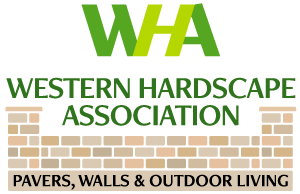FAQs
Find answers to many of your questions
Have a question that we haven’t answered, contact us at info@icpica.com
Find answers to many of your questions
Have a question that we haven’t answered, contact us at info@icpica.com
How do I remove stains and fix damaged pavers?
If the stain is one one or two pavers, replacing them with new pavers is the easiest way. Depending on the paver, some can be flipped over rather than replaced. Many suppliers of concrete pavers offer cleaners especially made for removing stains and for overall cleaning of the surface.
Are there disadvantages to sealing?
Since they are a transparent paint-like coating, sealers generally need to be reapplied every three to five years. Use sealers specifically for concrete pavers. More intense use of the pavers and extrement climates often increase the need for re-applying a coat of sealer.
Should I seal concrete pavers?
Sealing is not essential in many applications but it offers some benefits like making spills and stains easier to remove. Liquid sealers are applied after the pavers are installed and are cleaned. Paver suppliers can recommend cleaners for concrete pavers. Once applied, the sealers soak into the concrete and into the joints. The sealers in the joints help keep the joint sand in place and prevent weeds and ants, and sealers are essential for areas around swimming pools.
What is interlock?
In short, it’s the inability of a paver to move independently of its neighbors. It’s the locking of the pavers that causes loads to be spread over a wider area of pavers than where the load was applied. It’s the key to the strength of the pavement system.
Should limestone screenings or stone dust be used under the concrete pavers? What is recommended by ICPI?
No. Most screenings and stone dust have too many fine particles that slow drainage and rut under repeated loads from tires. Sand made with crushed shells (common in Florida) shouldn’t be used either. Concrete sand is recommended. It’s the same sand mixed into concrete pavers and poured, cast-in-place concrete.
Is it okay to use fabric designed to prevent weed growth in planting beds instead of geotextile?
No, this material is sometimes not as strong as geotextile and can tear easily.
What is geotextile? What does it do? Is it necessary?
Sometimes called filter fabric, geotextile is made of plastic threads that allow water to pass around them, but not very small particles of soil beneath them. Geotextile separates and contains the base from the underlying soil subgrade. It allows the base to shed water, and prevents the soil around it from working its way into the base.
Without geotextile, the soil will work its way into the base and weaken it. This is a slow process that happens when the soil is saturated with water or during periods of thawing. Geotextile stops this process and extends the life of the base by many years. Geotextile is recommended for use over silt and clay soils. It is not essential in sandy soils.
What is the base made of? What kind should be used?
The base is typically made of compacted, crushed stone that varies in size from one inch (25 mm) down to dust. Base materials used under asphalt street pavements are acceptable for use with interlocking concrete pavements. Some parts of the country use cement stabilized or concrete bases due to very weak or slow draining soils. However, most applications use a crushed stone base that’s compacted.
What are the components of an interlocking concrete pavement?
The components include a base, bedding sand, concrete pavers with sand in their joints, and an edge restraint to contain the pavers at the perimeter.
The Western Hardscape Association (WHA) offers courses to help professionals become certified, along with numerous networking events and more throughout the year.
Western Hardscape Association connects you with skilled contractors specializing in creating beautiful, high-quality hardscape projects. Our professionals have the expertise, equipment, and materials to turn your vision into reality, ensuring a safe and exceptional outcome for your home.
